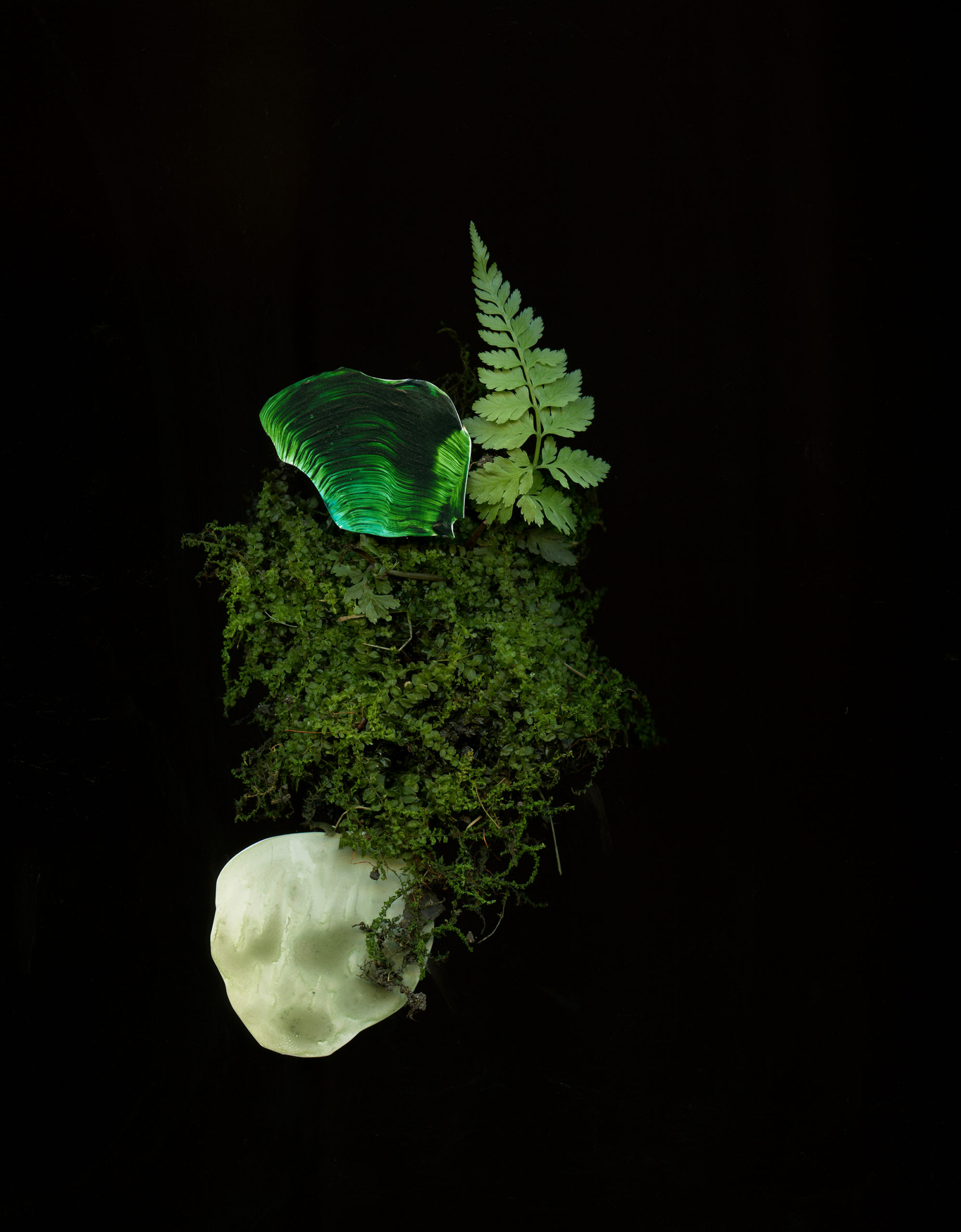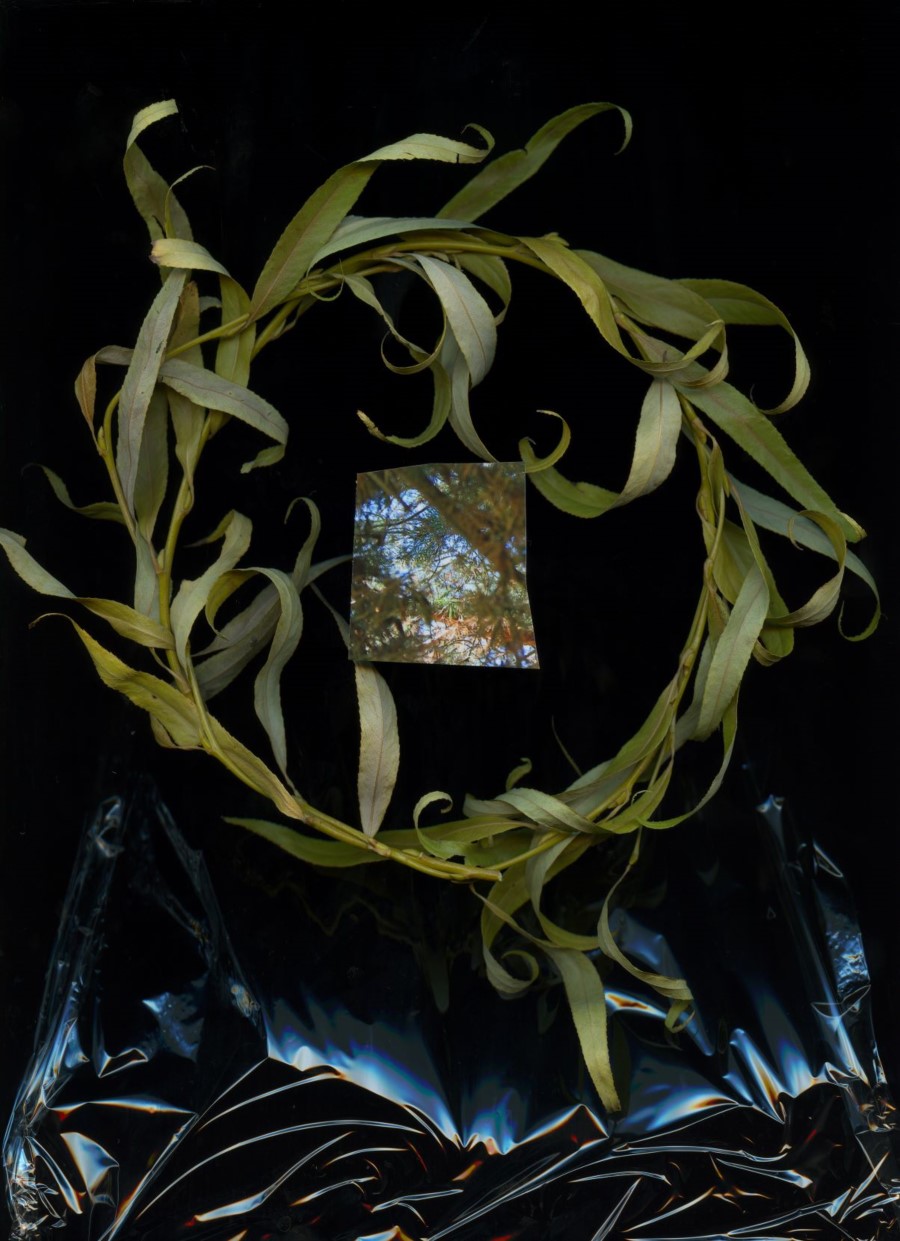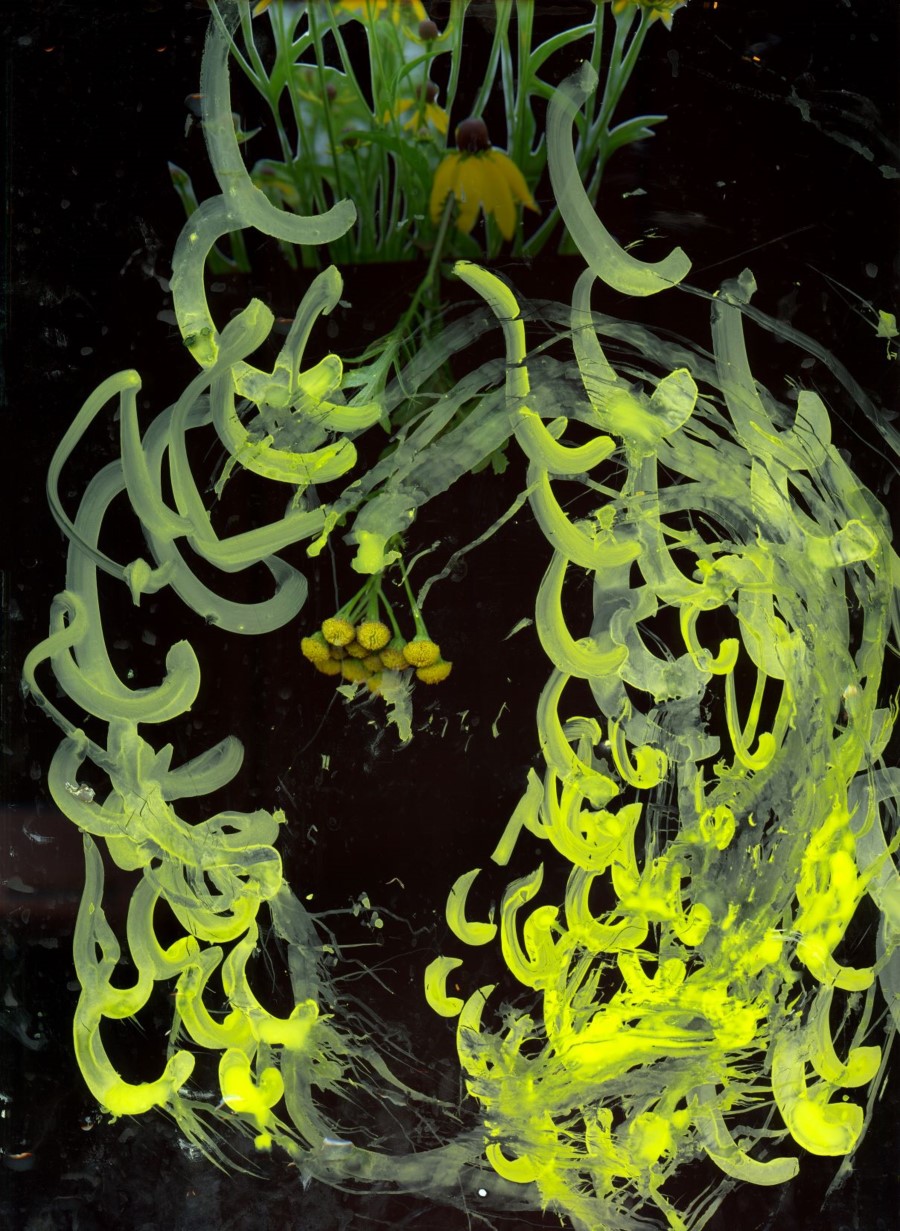Sight, Site and Motherhood: Missing Mosses, Pulsing Trees and Blinding Flowers
To conclude the Seeing Plants series, outgoing guest editor Regan Golden shares three episodes in which artmaking and parenting, body and vision, nature and city collide.

The edgelands have been part of my life since I was a kid. At the end of our street, in the middle of the city, the neighborhood kids found a world of our own making. By piling sticks, bending branches, and forming beds of grass, we carved out a space for ourselves amongst the trees or “edgelands” along the railroad tracks. This world was just out of reach, but safely within sight of home. As a child, the value of this place was self-evident: a place to invent and imagine. As an adult, the importance of the edgelands has become much more complex and harder to articulate. Over the last five years, this urban forest has played a pivotal role in our family, this city, and my work as an artist. I would like to take this opportunity to tell the story of me in the forest and the story of the forest in me.
Missing Mosses
The first ultrasound picture showed three concentric circles: a smooth outer pond encircled a coarsely textured cave full of dark material that looked almost like moss, within which was yet another circle. This one was pale and smooth, like the small rounded stones I had been collecting along a local lake just a few days before—a perfect skipper. But it was not to be, the doctor gently informed me: I would soon have a miscarriage. In the blur and confusion of this moment, all I knew was that inside of me there was a stone at the edge of a dark pond, ringed by lichen-covered mossy cliffs—but the ultrasound image was piqued, gritty and grey. In this gap between the picture and what it represented lay the truth of the matter. The picture was not alive on so many levels, but my own body definitely was.
And then another image, one week later: The walls of lichen and moss had disappeared, the pond and its precious stone remarkably absent—instead a vast cavern, a grand space. Two weeks before the first ultrasound picture, I stood at the center of the Rotunda in Mammoth Cave, in absolute awe of its smooth, undulating limestone dome. I took a picture of the cave, but all that appeared was a little light on a few stones at the base of one wall. The rest of the image was just darkness, a darkness that seemed to extend infinitely beyond the frame. But now, here it was, an equally vast and wondrous cave appearing inside of me. “How amazing,” I told the doctor emphatically. She looked at me quizzically for a moment before tacitly agreeing. The only trouble now is that when I lay down to sleep, I can’t help but wonder, where does all this space fit inside of me? I walk around with the sense that I am a woman with no boundaries, because I have this cave that expands and contracts and fills with a pond in springtime when the moss and lichen grow lush.

Pulsing Trees
My first son was born on the first day of spring, and my second son was born on the first day of autumn. Now, every day started with nursing the new baby and waiting for my toddler to wake up, while gazing out the window at the willow tree across the street, which danced slowly and rhythmically in the autumn breeze. As I sat there staring at the tree, the rush of chemicals that floods the brain while nursing filled my imagination with outlandish ideas for new artworks. Although I rarely had time to actually make art, schemes for lavish projects in far-flung places filled my mind in the quiet moments between trips to the doctor, the library, playdates, and preschool.
One morning on the cusp of winter, I woke up early to nurse the baby, only to find that the willow branches outside were pulsing quickly. The pale yellow leaves appeared to slide past the window rapidly and then curiously cycle backwards, as if in reverse. I stood up to look closer and realized as soon as my feet hit the floor—it wasn’t the willow tree, but me, sliding. I felt the wood floor tilt beneath my feet, as if I was standing on the deck of a ship rising and falling on the waves. When I fell to the floor and shut my eyes, everything immediately became solid again. I lay down on the cool firm floor, keeping my eyes closed. The quick heavy tread of my toddler’s feet were coming down the hall and I could the feel the vibration of his steps. He stopped and stood over me. I whispered to him to get help and rolled over on my back, eyes still closed.
Labyrinthistis, an infection of the cochlea in the inner ear, which controls your sense of balance lives up to its name. For three weeks I was on a revolving carousel, stuck in an endless labyrinth shifting forward and backwards. When open, my eyes ticked back and forth incessantly, so the picture presented to my brain was as if I was watching the whole world on fast forward and then reverse.
Strangely, I grew accustomed to my new sense of sight within a week and found I could tolerate it, even enjoy it, as long as I was sitting down. While I nursed my son, the willow tree’s now-bare green branches skidded briskly across the tilting window frame. Backwards and forwards the landscape twitched before my flickering eyes, until I realized that once I got back to making art, this would be my subject matter. The changes in my sense of sight revealed the miraculous beauty of the willow tree and the weeds that lined the railroad tracks across the street from my house, right outside my window.

Blinding Flowers
With two small children, this patch of trees along the railroad tracks gave me the opportunity to continue as an artist working within the genre of landscape. It was a far cry from the majestic forests of New England I had photographed for six years, and perhaps that is why it took me so long to see it: I spent two years staring out the window at these trees before making my first image. Partially out of necessity, partially out of a sense of curiosity, this urban forest had become the primary source for my artwork. In April, I began scanning, photographing, drawing each species of plant, and by mid-summer I had made more than fifty-two images in The Prairie Constructs series.
One morning in July, I was filled with a sense of wonder at the remarkable beauty and complexity of this tiny forest. Enticed by morning rain followed by summer sun, I grabbed my camera and hopped across the street into the woods, before the glimmering water droplets on the skunk cabbage leaves evaporated into another hot July afternoon. While I snapped pictures, my kids watched me from the front windows of the house. When I moved out of sight between the trees, they howled and I came bounding back filled with a sense of determination.
This moment of optimism was followed by a sense of unease, then a burning sensation along the arches of my feet and a call to my sister, then a call for an ambulance and a friend arriving to watch my children and then, as I sat on the front steps waiting for help to arrive, the yellow coneflowers began to glow and drift.
Brighter still became the flowers as the beating of my heart slowed to a dull thud. The coneflowers lining the perimeter of the woods across the street appeared to drift upwards slowly, forming a single cloud of yellow. Not the neon yellow of plastic lemons, not the yellow of highway signs—I mean the yellow of birch pollen, the yellow stripes on a hornet, the yellow of mid-July on the prairie. Powerful enough to envelop everything, and so it did. The yellow blooms filled my eyes and then I closed them.
All I remember now of that moment was being filled with gratitude for the flowers, and for my life that suddenly seemed extraordinary. I woke up sometime later in the back of an ambulance hurtling down the highway towards the hospital. Thankfully the blood flooded back into my heart, like a stream flowing in reverse. The only record of its great surge was the surface of my beet-red skin.
With the cause of this severe allergic reaction still unknown, I prepared to leave the hospital eight hours later. After changing out of the crinkly, pale blue hospital gown and back into my brown summer sundress, the doctor blithely remarked, “You look like a different person.”
To say that places change us seems obvious, but after that day, I was keenly aware that the forest had remade my outlook on life from the inside out. It enabled me to see the world around me again: an ability that I had lost in two years at home raising small children. One day was so much like the next, until I noticed the changes in the colors of the leaves on the willow tree at the edge of the woods, and the appearance of the small white blooms on the garlic mustard that filled every open space on the forest floor. This urban forest gave me back my sense of wonder and my understanding of time: As the plants grew, I realized that my children also grew.
Someday I am sure that I will see the coneflowers radiate and drift again, hopefully not for many years. In the meantime, I use my work as an artist to be present every day.
Conclusion
In this collection of essays, each author/artist describes a moment where plants appeared at the center of their lives. In these encounters, plants reveal their life-saving or life-taking power, and conversely, their ability to re-orient human life.
Last summer a large mullein plant (Latin name: Verbascum thapsus, Ojibwe name translated by Mary Siisip Genuisz: Nookaadiziiganzh) sprouted up between the paving stones in my backyard in the middle of the city. Typically a prairie plant, mullein can reach up to four feet in height and two feet around at the base. At first I thought I had better remove the mullein, but instead I let the plant grow up next to the picnic table. It wasn’t until dinner one evening in July that I realized the last rays of sunlight at the end of the day shone over the skyline of Minneapolis and right onto the mullein in full bloom. The rosette leaf pattern on the mullein signifies that the plant has powerful medicinal properties. The essays collected here are much like the flowers and leaves on the mullein: each uniquely shaped, revolving around a central core, full of vibrant colors and textures, passions and experiences.
Plant communities are constantly evolving together in response to changes in their environment. Each plant brings their unique skill set to the community to help each other to thrive. The artists in this collection of writings are part of a larger ecosystem of artists, writers, designers, and makers that have made this community a lush garden of creativity and purpose.
This article is part of the series Seeing Plants: Vision and Botany in Contemporary Art, guest edited by Regan Golden.